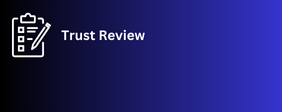In the digital world, data is worth its weight in gold — and CRM is at the heart of this new information economy. More than just a management tool, CRM has become the strategic heart of data-driven companies. But with the large volumes of information circulating, comes increased responsibility: protecting your customers’ data is not just a legal obligation — it is an ethical commitment and a competitive advantage.
First of all, this article presents a complete overview of data security in CRM , the main risks involved, the best protection practices, the requirements of LGPD and GDPR, as well as the technologies and trends that shape the future of this critical area for any business.
Why is CRM data security crucial for your business?
Imagine your company’s CRM as a digital vault. It stores your most valuable information: customer data, interaction history, preferences, contracts, and, in many cases, sensitive data. Now, imagine that vault being vulnerable. This is exactly what happens when CRM data security is neglected.
As a result, the impacts of a CRM data job function email database breach go far beyond the technical sphere. Losses can be financial (fines, compensation), reputational (loss of trust, boycotts) and legal (LGPD and GDPR sanctions ). An IBM study revealed that the average cost of a data breach exceeds US$4 million globally.
In other words, by protecting customer you can achieve financial prosperity data in a CRM, you are not only following regulations, but also building a competitive edge. Thus, in a market that is increasingly driven by data and privacy, companies that treat data protection seriously gain valuable points with their consumers.
Common Data Security Risks in CRM Platforms
Security risks in CRM are diverse and not cn leads always visible at first glance. Here are the most common ones:
1. Unauthorized access
Employees with overly broad credentials or no real need to access certain data can pose a significant risk. This can be compounded by a lack of role-based access controls (RBAC) .
2. Phishing and social engineering
Fraudulent email campaigns can trick employees and open doors for criminals. As soon as a malicious link is clicked, the entire CRM can be compromised .
3. Malware and ransomware
Attacks that install malicious code can hijack data or paralyze the system, impairing operations and putting privacy at risk in CRM .
4. Human errors
In fact, from the accidental sending of confidential data to the involuntary deletion of information, the human factor is still one of the main vectors of security failures.
5. Software vulnerabilities
Even if the system is up to date, flaws in plugins or poorly designed integrations can become entry points for attackers.
Just to illustrate, imagine a medical clinic that stores patient history in its CRM. An intern, without proper training, has unrestricted access to the system. One day, he installs free software on the computer that is infected with malware. The result: more than a thousand leaked medical records. As a result, in addition to the fine from ANPD , the clinic lost patients and credibility.
